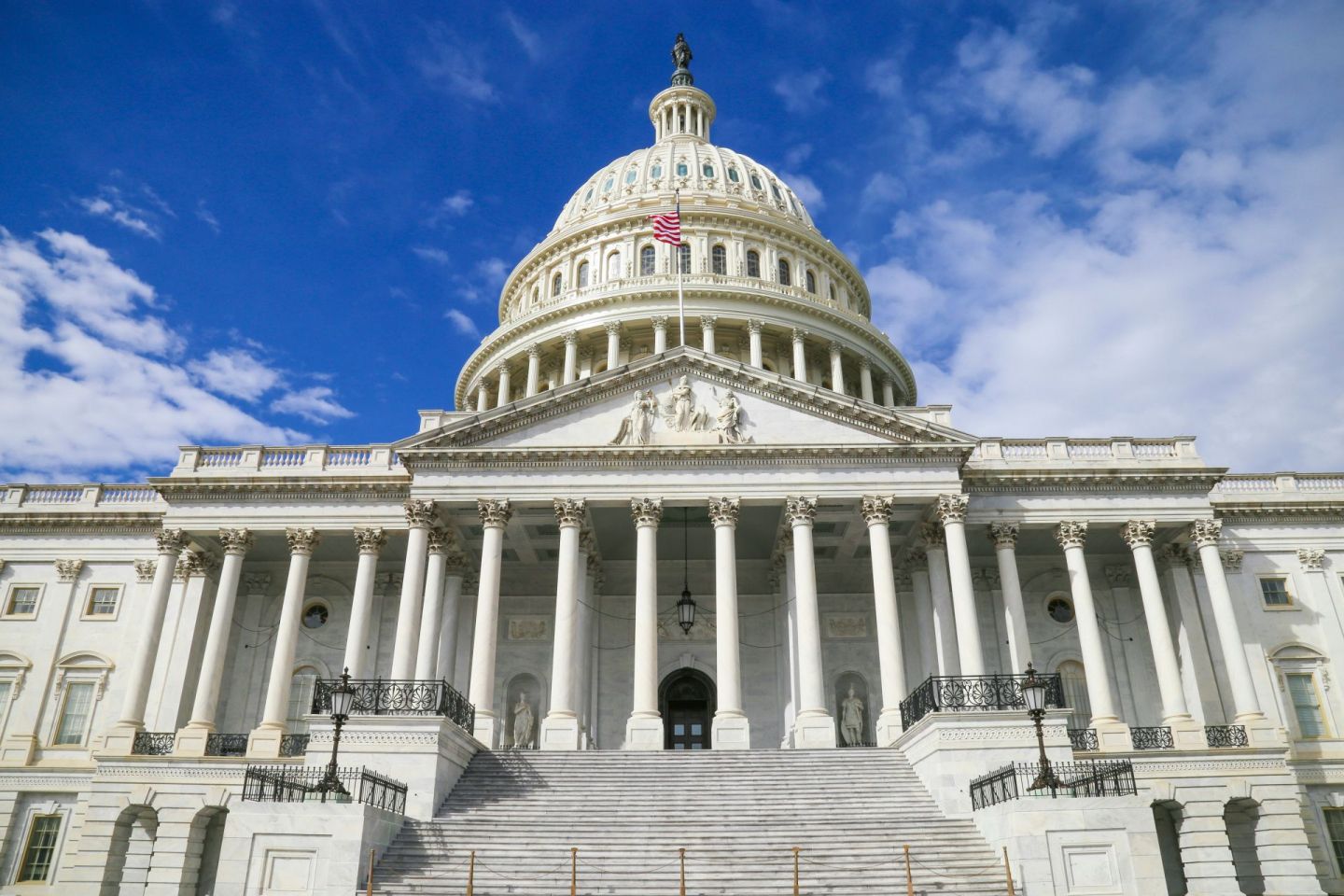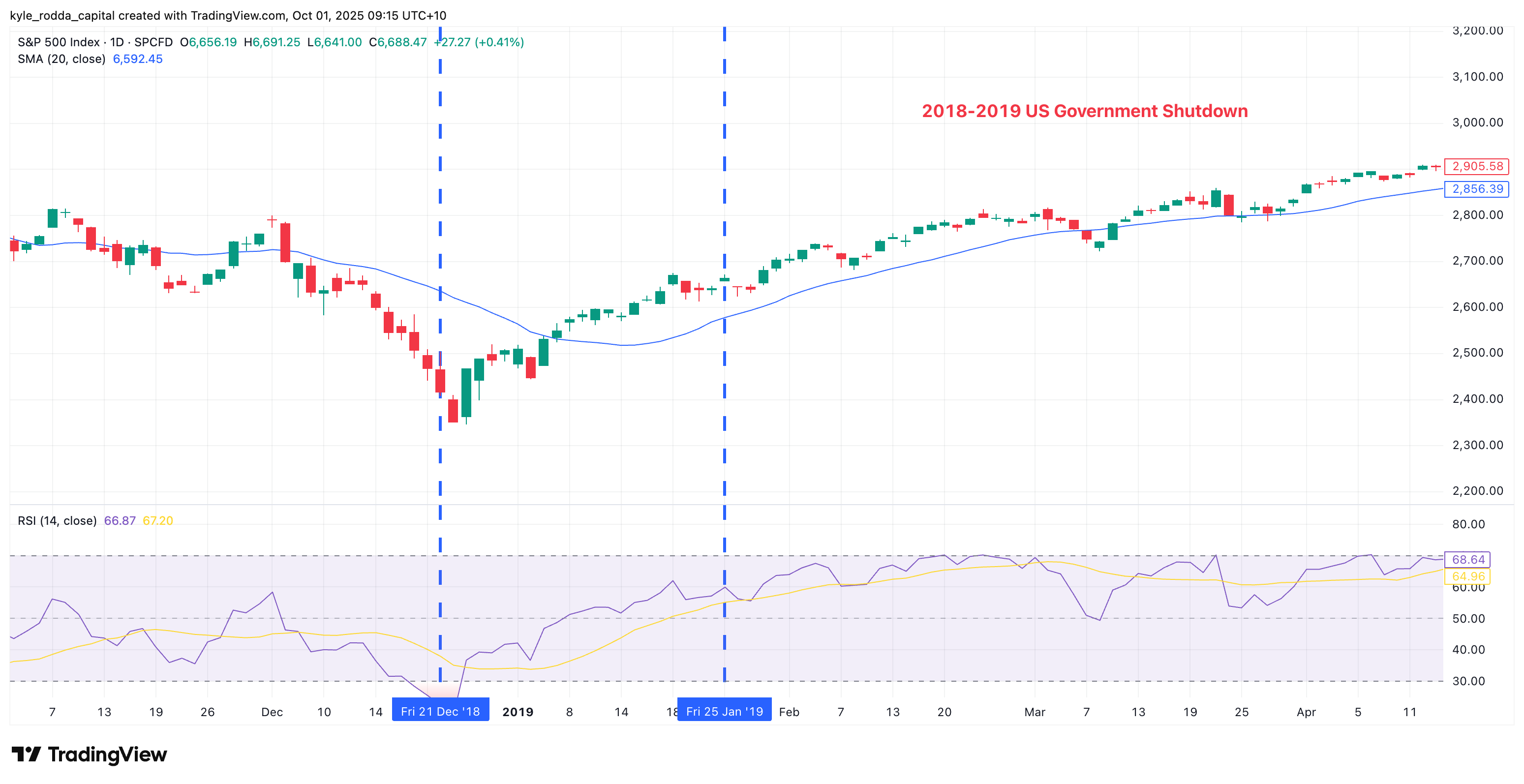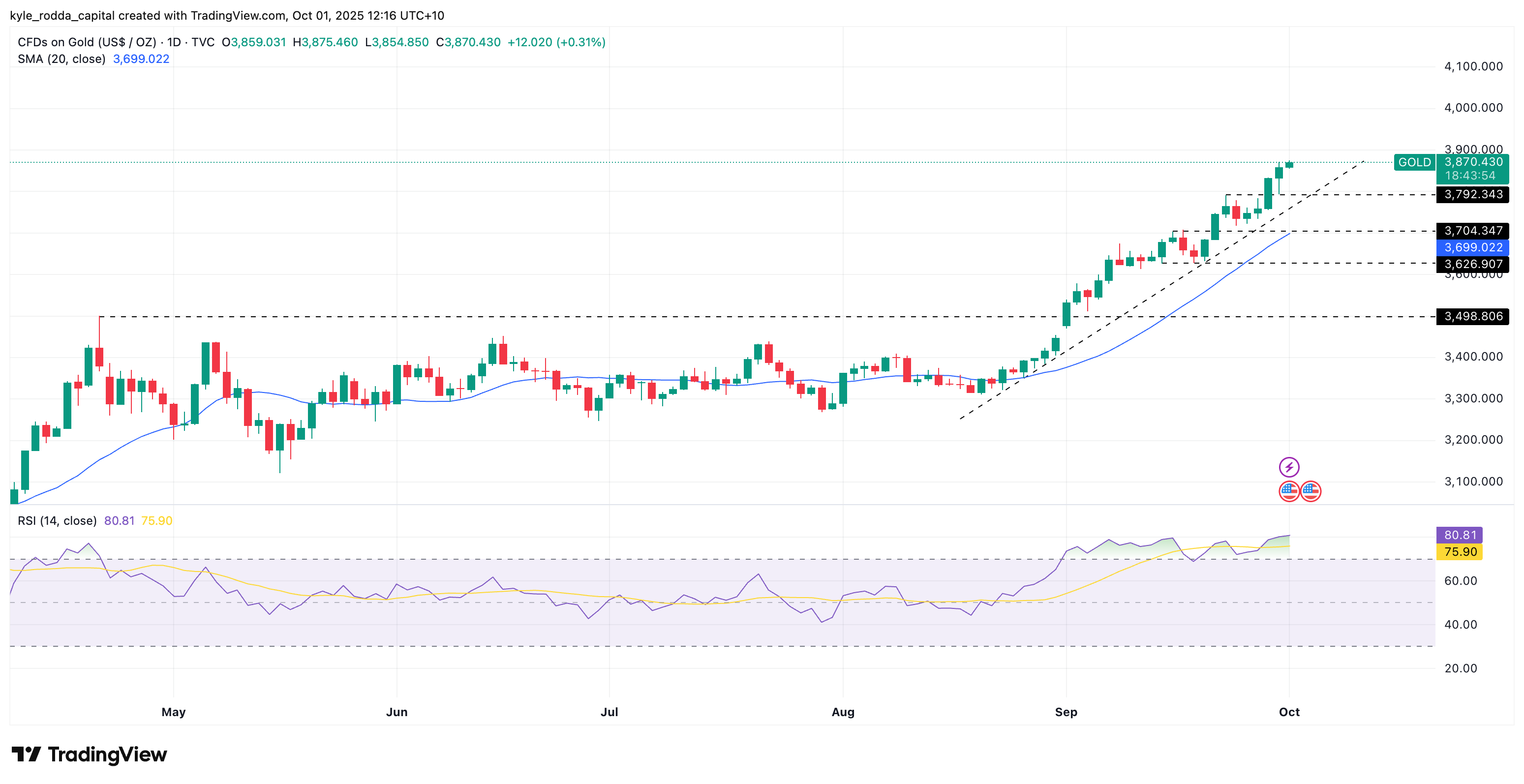Wall Street pushes higher as US Government heads for another shutdown
The US Government heads for another shutdown, potentially delaying economic data and leading to permanent lay-offs.
The US Government is poised to pass the October 1 deadline without a deal, shutting down non-essential services and furloughing hundreds of thousands of public servants.
Why is the US Government heading for another shutdown?
The U.S. government is required to pass annual spending bills to fund federal agencies, with the fiscal year beginning on October 1. If Congress cannot agree on full-year appropriations or a short-term continuing resolution, agencies lose their legal authority to spend money and must shut down non-essential operations. The Congressional Budget Office estimates that up to 750,000 federal workers could be furloughed, cutting around $400 million in pay each day the shutdown continues.
The current standoff reflects a clash between Republicans, who want a “clean” funding bill free of policy riders, and Democrats, who are demanding provisions tied to healthcare programs, including subsidies under the Affordable Care Act. While essential services such as Social Security and air traffic control continue, the shutdown disrupts government data releases, regulatory approvals, and wider economic activity.
A prolonged shut down could slow US economic activity
A shutdown could have a tangible impact on US economic growth, depending on how long it extends. According to a post-mortem by the Congressional Budget Office, the partial shutdown that ended in January 2019 and lasted 35 days saw a material drop in economic activity – albeit one that was mostly unwound as pent up demand boosted activity following the end of the shutdown.
The CBO analysis calculated that the shutdown led to the delay of $US18 billion in spending. The result was an estimated 0.1% reduction in real GDP in the fourth quarter of 2018 and 0.2% reduction in 2019, driven predominantly by a drop in consumer spending and public money flowing to private businesses.
The markets generally ignore Government shutdowns
Typically, a shutdown is immaterial for markets. In fact, the 2018-2019 shutdown, which lasted for over a month, actually saw Wall Street rise. Gold prices were largely unaffected, while the impact on the Dollar and US Treasuries was negligible. The reason was because of the famous “Powell-pivot” at the end of 2018, which all but ended the Fed’s hiking cycle at the time.

(Source: Trading View)
Past performance is not a reliable indicator of future results.
The risk for the markets could be twofold. One, it could delay the release of Friday’s Non-Farm Payrolls data, which is going to be a nuisance, if nothing else, especially as market participants search for insights on the health of an ailing US labour market. US President Trump has also threatened to permanently lay-off workers. That risks turning the shutdown into something that puts upward pressure on unemployment and causes a mini growth shock.
Currently, the markets aren’t ascribing a high chance of such an outcome. However, if it materialises, it could impact rate expectations. Government shutdowns have led to a marginally weaker US Dollar and lower yields in the past. A genuine growth shock, even if relatively small, could add pressure on an already frail labour market. The dynamic would likely weaken the US Dollar further. That may support gold’s appeal, which has broken to record highs courtesy of rate cut expectations.

(Source: Trading View)
Past performance is not a reliable indicator of future results.